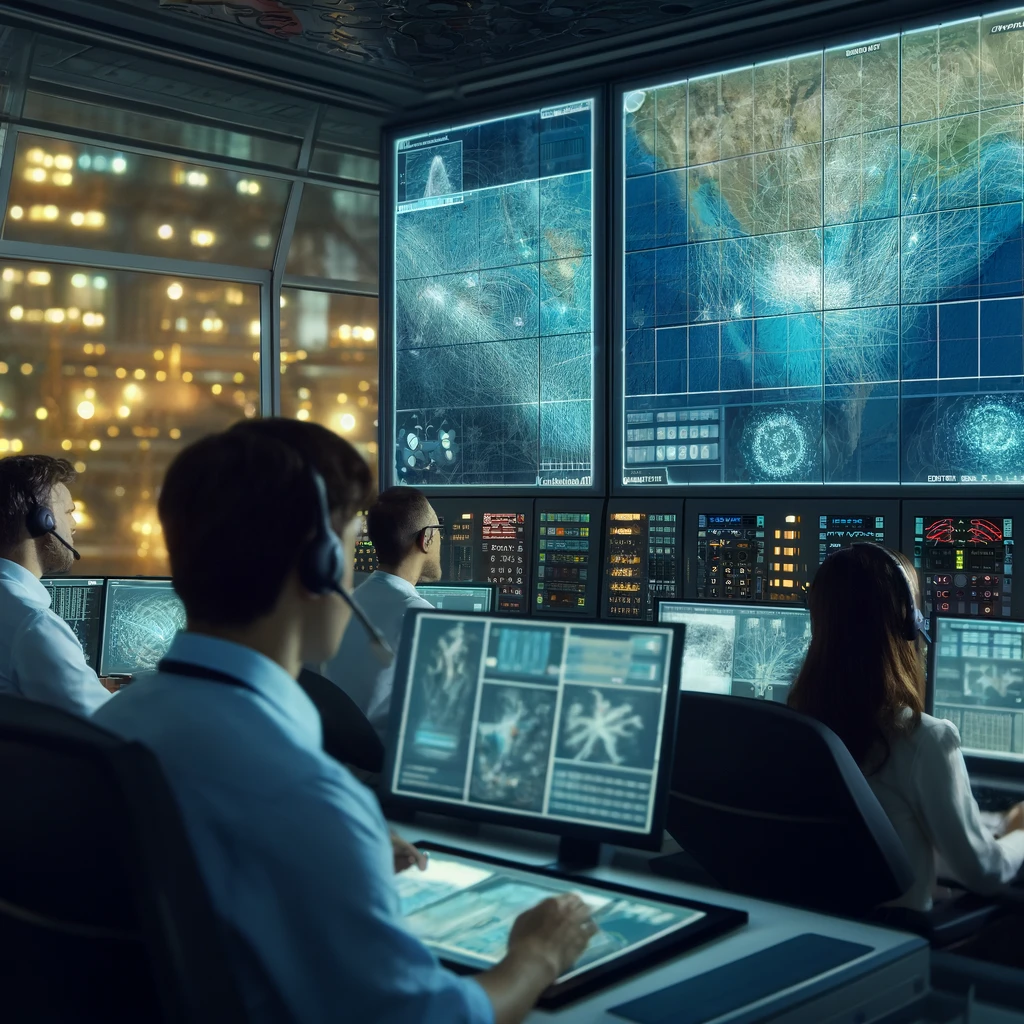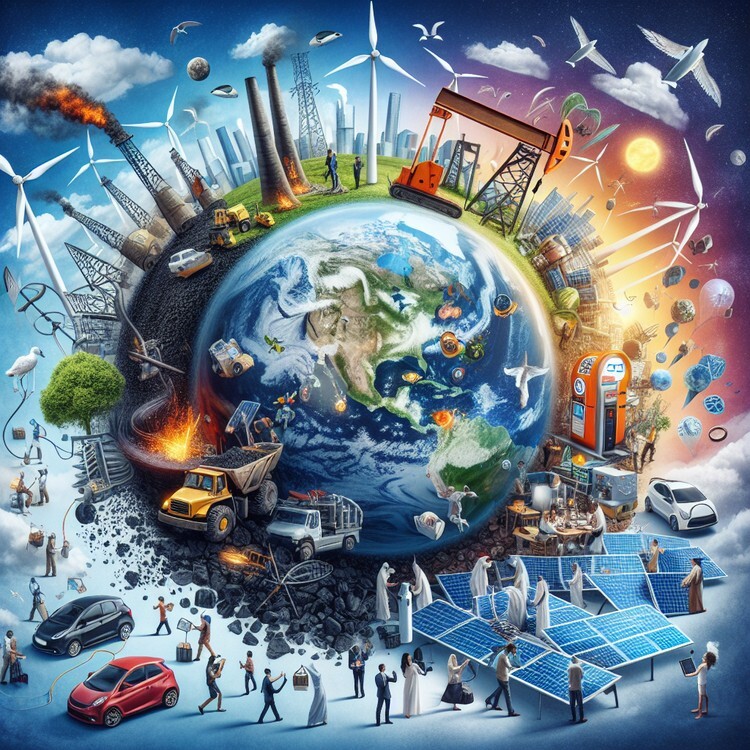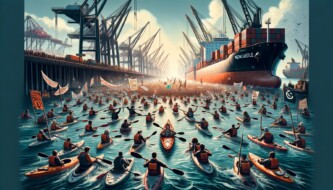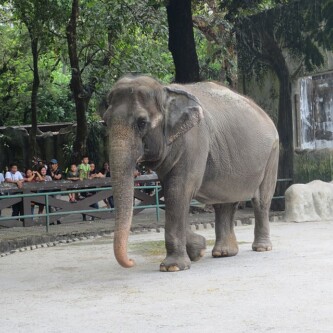India is actively participating in the race to mine valuable minerals from the ocean floor, which are crucial for renewable energy technologies. The country has already obtained two deep-sea exploration licenses in the Indian Ocean and has applied for two more. This competition for critical minerals, such as cobalt, nickel, copper, and manganese, is intensifying among major global powers like China and Russia. The United Nations-affiliated International Seabed Authority (ISA) has issued 31 exploration licenses, with India seeking to increase its count to match Russia and come close to China’s number.
India’s applications focus on exploring polymetallic sulphides and cobalt-rich ferromanganese crusts in the Central Indian Ocean. The ISA has raised questions and concerns about these applications, including the claim of another country over the seabed area India has applied for. Regardless of the outcome, India is determined not to lag behind in securing critical minerals from the ocean depths. The Indian Ocean holds significant potential reserves, motivating the Indian government to increase its scientific exploration efforts.
India is not alone in this pursuit, as countries like China, Germany, and South Korea already have exploration licenses in the Indian Ocean. India conducted trials of its mining machine in 2022 and successfully collected polymetallic nodules rich in manganese, cobalt, nickel, and copper. The country’s deep-sea mining plans are driven by the desire to establish itself as a powerhouse in its own right and not fall behind China in deep-sea exploration.
While some argue that land-based mining has reached its limits and faces environmental and conflict-related challenges, environmental campaigners express concerns about the potential damage deep-sea mining could cause. Several countries, including the UK, Germany, Brazil, and Canada, are calling for a halt or temporary pause on deep-sea mining due to the lack of information about marine ecosystems in those depths.
The World Bank projects a fivefold increase in the extraction of critical minerals by 2050 to meet the demand for clean energy technologies. India aims to increase its renewables capacity to 500 gigawatts by 2030 and meet 50% of its energy requirements from renewables. To achieve these targets, India needs to secure critical minerals from all possible sources, including the deep seabed. Currently, a few countries dominate the production of critical minerals on land, raising geopolitical concerns about China’s dominance in processing these minerals.
To counter China’s dominance, the US and several western countries have launched the Minerals Security Partnership, of which India is now a member. India has also signed an agreement with Russia to develop deep-sea mining technologies. The combination of rising geopolitical tensions and the energy transition is accelerating the race to extract and utilize critical minerals.
Original news source: India in undersea race to mine world’s battery metal (BBC)
🎧 Listen:
Slow
Normal
Fast
📖 Vocabulary:
| 1 | polymetallic | Containing several types of metals |
| 2 | seabed | The bottom of the ocean |
| 3 | exploration | The act of searching an area for natural resources |
| 4 | licenses | Official permissions granted for specific activities |
| 5 | renewable | Capable of being replenished naturally over time |
| 6 | geopolitical | Relating to the politics of international relations, especially regarding territorial disputes and economic influence |
| 7 | ecosystems | Biological communities found in a specific environment |
| 8 | dominance | The state of being more powerful or influential than others in a competitive situation |
| 9 | campaigners | Individuals or groups actively advocating for a cause |
| 10 | minerals | Naturally occurring substances that can be extracted and used by humans |
| 11 | intensifying | Becoming more intense or serious |
| 12 | extraction | The process of obtaining resources from the earth |
| 13 | reserves | Supplies of a resource that can potentially be used in the future |
| 14 | technologies | Practical applications of scientific knowledge, especially in industry |
| 15 | partnership | A cooperative agreement between two or more parties |
Group or Classroom Activities
Warm-up Activities:
– News Summary
Instructions: Divide the students into pairs or small groups. Provide each group with a copy of the article. Instruct them to read the article and then summarize the main points in a brief news summary. They should focus on capturing the key information and presenting it concisely. Afterward, each group can present their news summary to the class.
– Opinion Poll
Instructions: Begin by discussing the topic of deep-sea mining and the potential environmental concerns it raises. Divide the class into two groups: one in favor of deep-sea mining and one against it. Instruct each group to come up with three strong arguments to support their stance. Then, conduct an opinion poll where each student votes for either the pro or con side. Afterward, facilitate a class discussion where students can share their opinions and reasoning.
– Vocabulary Pictionary
Instructions: Select 10 key vocabulary words from the article and write each word on a separate piece of paper. Divide the class into two teams. One student from each team will come to the front of the class and choose a word. They must then draw a picture to represent the word, without using any letters or numbers. The team members must guess the word based on the drawing. The team that guesses correctly earns a point. Continue until all the words have been drawn and guessed.
– Speed Summarizing
Instructions: Divide the class into pairs or small groups. Provide each group with a copy of the article. Instruct them to take turns summarizing the article to their partner in one minute or less. Encourage them to focus on the main points and key information. After each round, have the pairs or groups switch roles so that each student has a chance to summarize and listen.
– Future Predictions
Instructions: Discuss the future implications of deep-sea mining for renewable energy technologies. Ask the students to make predictions about how the race for critical minerals will unfold, and what impact it will have on global power dynamics and the environment. Divide the class into small groups and have them brainstorm and discuss their predictions. Afterward, each group can share their predictions with the class and engage in a discussion about the different perspectives.
🤔 Comprehension Questions:
1. What are some valuable minerals that India is seeking to mine from the ocean floor?
2. How many exploration licenses has India obtained from the International Seabed Authority?
3. What are some concerns raised by the ISA about India’s applications for exploration licenses?
4. Which countries already have exploration licenses in the Indian Ocean?
5. What are some concerns expressed by environmental campaigners about deep-sea mining?
6. What is India’s goal for its renewables capacity by 2030?
7. Why does India need to secure critical minerals from all possible sources?
8. What steps has India taken to counter China’s dominance in critical minerals production?
Go to answers ⇩
🎧✍️ Listen and Fill in the Gaps:
India is actively participating in the race to mine valuable minerals from the ocean floor, which are crucial for renewable energy technologies. The country has already obtained two deep-sea exploration (1)______ in the Indian (2)______ and has applied for two more. This competition for critical minerals, such as cobalt, nickel, copper, and manganese, is intensifying among major global powers like (3)______ and Russia. The United Nations-affiliated International Seabed Authority (ISA) has (4)______ 31 exploration licenses, with India seeking to increase its count to match Russia and come close to China’s number.
India’s applications focus on exploring polymetallic sulphides and cobalt-rich ferromanganese crusts in the Central Indian Ocean. The ISA has (5)______ questions and concerns about these applications, (6)______ the claim of another country over the seabed area (7)______ has applied for. Regardless of the outcome, India is determined not to lag behind in securing critical minerals from the ocean depths. The Indian Ocean holds significant potential reserves, motivating the Indian government to increase its scientific exploration efforts.
India is not alone in this pursuit, as countries like China, Germany, and South Korea already have exploration licenses in the Indian Ocean. India (8)______ trials of its mining machine in 2022 and successfully collected polymetallic nodules rich in manganese, cobalt, nickel, and copper. The country’s deep-sea mining plans are driven by the desire to establish itself as a powerhouse in its own right and not fall behind China in deep-sea exploration.
While some (9)______ that land-based mining has reached its limits and faces (10)______ and conflict-related challenges, environmental campaigners express concerns about the potential (11)______ deep-sea mining could cause. (12)______ countries, including the UK, Germany, Brazil, and Canada, are calling for a halt or temporary pause on deep-sea mining due to the lack of information about marine ecosystems in those depths.
The World Bank projects a fivefold increase in the extraction of critical minerals by 2050 to meet the demand for clean energy technologies. India aims to increase its renewables capacity to 500 gigawatts by 2030 and meet 50% of its (13)______ requirements from renewables. To achieve these targets, India needs to secure critical minerals from all possible sources, including the deep seabed. Currently, a few countries dominate the production of critical minerals on land, raising (14)______ concerns about China’s (15)______ in processing these minerals.
To counter China’s dominance, the US and several western countries have launched the Minerals Security Partnership, of which India is now a (16)______. India has also signed an agreement with Russia to develop deep-sea mining technologies. The combination of rising geopolitical tensions and the energy transition is accelerating the race to extract and utilize critical minerals.
Go to answers ⇩
💬 Discussion Questions:
Students can ask a partner these questions, or discuss them as a group.
1. What do you think are the advantages and disadvantages of mining valuable minerals from the ocean floor?
2. How would you feel if your country was lagging behind in securing critical minerals from the ocean depths? Why?
3. Do you think deep-sea mining is a sustainable solution for meeting the demand for clean energy technologies? Why or why not?
4. What is the significance of the Indian Ocean in the race to mine valuable minerals?
5. How do you think the extraction of critical minerals from the ocean floor could impact marine ecosystems? Why?
6. What are some potential environmental and conflict-related challenges associated with land-based mining?
7. How do you think the race to extract and utilize critical minerals is affecting geopolitical tensions?
8. Do you believe that a temporary pause on deep-sea mining is necessary to gather more information about marine ecosystems? Why or why not?
9. What is the role of renewable energy technologies in reducing carbon emissions and combating climate change?
10. How do you think the demand for clean energy technologies will impact the extraction of critical minerals in the future?
11. Do you think it is fair for a few countries to dominate the production of critical minerals on land? Why or why not?
12. How do you think the Minerals Security Partnership can counter China’s dominance in processing critical minerals?
13. What are some potential economic benefits that countries can gain from deep-sea mining?
14. How do you think the energy transition is influencing the race to extract and utilize critical minerals?
15. Do you believe that countries should prioritize the extraction of critical minerals from the ocean floor over other sources? Why or why not?
Individual Activities
📖💭 Vocabulary Meanings:
Match each word to its meaning.
Words:
1. polymetallic
2. seabed
3. exploration
4. licenses
5. renewable
6. geopolitical
7. ecosystems
8. dominance
9. campaigners
10. minerals
11. intensifying
12. extraction
13. reserves
14. technologies
15. partnership
Meanings:
(A) Containing several types of metals
(B) Relating to the politics of international relations, especially regarding territorial disputes and economic influence
(C) Capable of being replenished naturally over time
(D) Becoming more intense or serious
(E) Practical applications of scientific knowledge, especially in industry
(F) The state of being more powerful or influential than others in a competitive situation
(G) The act of searching an area for natural resources
(H) A cooperative agreement between two or more parties
(I) The bottom of the ocean
(J) Naturally occurring substances that can be extracted and used by humans
(K) Biological communities found in a specific environment
(L) Supplies of a resource that can potentially be used in the future
(M) Official permissions granted for specific activities
(N) The process of obtaining resources from the earth
(O) Individuals or groups actively advocating for a cause
Go to answers ⇩
🔡 Multiple Choice Questions:
1. What is the main motivation behind India’s pursuit of deep-sea mining?
(a) To secure critical minerals for renewable energy technologies
(b) To establish itself as a powerhouse in deep-sea exploration
(c) To compete with China and Russia in the race for valuable minerals
(d) To address the environmental challenges of land-based mining
2. Which organization has issued exploration licenses for deep-sea mining?
(a) United Nations (UN)
(b) International Seabed Authority (ISA)
(c) World Bank
(d) Minerals Security Partnership
3. What types of minerals is India focused on exploring in the Central Indian Ocean?
(a) Cobalt, nickel, copper, and manganese
(b) Polymetallic nodules rich in manganese, cobalt, nickel, and copper
(c) Critical minerals for clean energy technologies
(d) Polymetallic sulphides and cobalt-rich ferromanganese crusts
4. Which countries already have exploration licenses in the Indian Ocean?
(a) Russia, Brazil, and Canada
(b) UK, Germany, and Brazil
(c) China, Germany, and South Korea
(d) China, Russia, and Canada
5. What concerns have been raised about India’s applications for deep-sea mining?
(a) Lack of information about marine ecosystems in the deep-sea
(b) Environmental damage that deep-sea mining could cause
(c) All of the above
(d) Another country’s claim over the seabed area India has applied for
6. What does the World Bank project for the extraction of critical minerals by 2050?
(a) A tenfold increase
(b) A fivefold increase
(c) A twofold increase
(d) No increase
7. What is the main reason for the race to extract and utilize critical minerals?
(a) The need to address environmental challenges of land-based mining
(b) The desire to establish dominance in deep-sea exploration
(c) Rising geopolitical tensions and the energy transition
(d) The demand for clean energy technologies
8. What partnership has been launched to counter China’s dominance in critical minerals?
(a) Minerals Security Partnership
(b) International Seabed Authority (ISA)
(c) United Nations (UN)
(d) World Bank
Go to answers ⇩
🕵️ True or False Questions:
1. India’s applications prioritize exploring polymetallic sulphides and cobalt-rich ferromanganese crusts in the South Indian Ocean.
2. China and Russia are collaborating for critical minerals from the ocean floor.
3. India has not joined the Minerals Security Partnership and signed an agreement with Russia to develop deep-sea mining technologies.
4. The World Bank projects a fivefold increase in the extraction of critical minerals by 2050.
5. India conducted trials of its mining machine in 2022 and successfully collected polymetallic nodules rich in manganese, cobalt, nickel, and copper.
6. The International Seabed Authority (ISA) has issued 25 exploration licenses.
7. Environmental campaigners have expressed concerns about the potential damage deep-sea mining could cause.
8. India has obtained two deep-sea exploration licenses in the Indian Ocean and has applied for two more.
Go to answers ⇩
📝 Write a Summary:
Write a summary of this news article in two sentences.
Writing Questions:
Answer the following questions. Write as much as you can for each answer.
1. What is the motivation behind India’s pursuit of deep-sea mining for valuable minerals?
2. What concerns have been raised about India’s applications for deep-sea exploration licenses?
3. Which countries already have exploration licenses in the Indian Ocean?
4. What are the potential environmental concerns associated with deep-sea mining?
5. Why is there a growing demand for critical minerals, particularly for clean energy technologies?
✅ Answers
🤔✅ Comprehension Question Answers:
1. Some valuable minerals that India is seeking to mine from the ocean floor are cobalt, nickel, copper, and manganese.
2. India has obtained two exploration licenses from the International Seabed Authority.
3. The ISA has raised questions and concerns about India’s applications, including the claim of another country over the seabed area India has applied for.
4. Countries like China, Germany, and South Korea already have exploration licenses in the Indian Ocean.
5. Environmental campaigners have expressed concerns about the potential damage deep-sea mining could cause, as there is a lack of information about marine ecosystems in those depths.
6. India aims to increase its renewables capacity to 500 gigawatts by 2030.
7. India needs to secure critical minerals from all possible sources to meet its energy requirements and reduce its dependence on a few countries that currently dominate the production of critical minerals on land.
8. India has taken steps to counter China’s dominance in critical minerals production by joining the Minerals Security Partnership with the US and several western countries, and by signing an agreement with Russia to develop deep-sea mining technologies.
Go back to questions ⇧
🎧✍️✅ Listen and Fill in the Gaps Answers:
(1) licenses
(2) Ocean
(3) China
(4) issued
(5) raised
(6) including
(7) India
(8) conducted
(9) argue
(10) environmental
(11) damage
(12) Several
(13) energy
(14) geopolitical
(15) dominance
(16) member
Go back to questions ⇧
📖💭✅ Vocabulary Meanings Answers:
1. polymetallic
Answer: (A) Containing several types of metals
2. seabed
Answer: (I) The bottom of the ocean
3. exploration
Answer: (G) The act of searching an area for natural resources
4. licenses
Answer: (M) Official permissions granted for specific activities
5. renewable
Answer: (C) Capable of being replenished naturally over time
6. geopolitical
Answer: (B) Relating to the politics of international relations, especially regarding territorial disputes and economic influence
7. ecosystems
Answer: (K) Biological communities found in a specific environment
8. dominance
Answer: (F) The state of being more powerful or influential than others in a competitive situation
9. campaigners
Answer: (O) Individuals or groups actively advocating for a cause
10. minerals
Answer: (J) Naturally occurring substances that can be extracted and used by humans
11. intensifying
Answer: (D) Becoming more intense or serious
12. extraction
Answer: (N) The process of obtaining resources from the earth
13. reserves
Answer: (L) Supplies of a resource that can potentially be used in the future
14. technologies
Answer: (E) Practical applications of scientific knowledge, especially in industry
15. partnership
Answer: (H) A cooperative agreement between two or more parties
Go back to questions ⇧
🔡✅ Multiple Choice Answers:
1. What is the main motivation behind India’s pursuit of deep-sea mining?
Answer: (a) To secure critical minerals for renewable energy technologies
2. Which organization has issued exploration licenses for deep-sea mining?
Answer: (b) International Seabed Authority (ISA)
3. What types of minerals is India focused on exploring in the Central Indian Ocean?
Answer: (d) Polymetallic sulphides and cobalt-rich ferromanganese crusts
4. Which countries already have exploration licenses in the Indian Ocean?
Answer: (c) China, Germany, and South Korea
5. What concerns have been raised about India’s applications for deep-sea mining?
Answer: (d) Another country’s claim over the seabed area India has applied for
6. What does the World Bank project for the extraction of critical minerals by 2050?
Answer: (b) A fivefold increase
7. What is the main reason for the race to extract and utilize critical minerals?
Answer: (c) Rising geopolitical tensions and the energy transition
8. What partnership has been launched to counter China’s dominance in critical minerals?
Answer: (a) Minerals Security Partnership
Go back to questions ⇧
🕵️✅ True or False Answers:
1. India’s applications prioritize exploring polymetallic sulphides and cobalt-rich ferromanganese crusts in the South Indian Ocean. (Answer: False)
2. China and Russia are collaborating for critical minerals from the ocean floor. (Answer: False)
3. India has not joined the Minerals Security Partnership and signed an agreement with Russia to develop deep-sea mining technologies. (Answer: False)
4. The World Bank projects a fivefold increase in the extraction of critical minerals by 2050. (Answer: True)
5. India conducted trials of its mining machine in 2022 and successfully collected polymetallic nodules rich in manganese, cobalt, nickel, and copper. (Answer: True)
6. The International Seabed Authority (ISA) has issued 25 exploration licenses. (Answer: False)
7. Environmental campaigners have expressed concerns about the potential damage deep-sea mining could cause. (Answer: True)
8. India has obtained two deep-sea exploration licenses in the Indian Ocean and has applied for two more. (Answer: True)
Go back to questions ⇧












